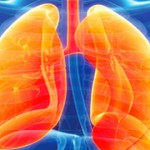Although Dr. Shum’s focus is the lung, he acknowledges that there will also likely be a connection to the gut. The patients did not have overt gut problems; however, there were instances of failure to thrive as well as, possibly, nutritional deficiencies. The researchers are continuing to investigate the specificity of the effect in the lung.
Animal models of the COPA mutation do not yet exist, and Dr. Shum suspects that a knockout would be embryonically lethal. He and his colleagues are, however, actively exploring the possibility of an animal model.
Clinical Implications
Dr. Shum suggests that any child who presents with pulmonary hemorrhage, interstitial lung disease and arthritis be sequenced for the COPA mutation so they may be given a diagnosis of the syndrome. Such a diagnosis would help patients understand the clinical course of disease.
A treatment for the syndrome does not yet exist, but Dr. Shum and colleagues raise the possibility that drugs that target Th17 cells may be beneficial for these patients. In particular, the investigators are interested in understanding if IL-17 directed therapies may be beneficial in these patients.
Lara C. Pullen, PhD, is a medical writer based in the Chicago area.
Reference
- Watkin LB, Jessen B, Wiszniewski W, et al. COPA mutations impair ER-Golgi transport and cause hereditary autoimmune-mediated lung disease and arthritis. Nat Genet. 2015 Apr 20. doi: 10.1038/ng.3279.



